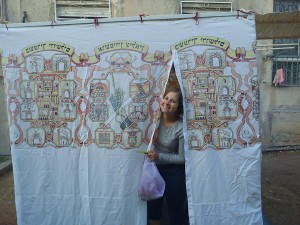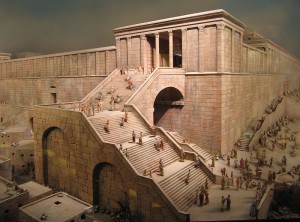On any tour of Jerusalem for the next week, the week of Succot / Tabernacles (for instance if you were to book a Chol HaMoed Tour here) you will see many interesting little booths topped with leaves or bamboo canes and decorated with streamers and pictures (such as the one above). This custom derives from a commandment in the Bible (Leviticus 23: 42 – 43) that the Israelites should live in booths (Succot) for seven days. There is a deeper Kabbalistic reason for the custom which is apparent when one asks the question, why also on Succot do Jews read Kohelet / Ecclesiates?
A Book Focused on the Sun
One of the first verses in Kohelet says:
‘The Sun rises and the Sun sets – then to its place it is pulled and it shines again ‘ (Kohelet 1: 4)
In fact the book seems to have a pre – occupation with the Sun, it mentions the Sun many times. The Sun is a representation of Din; divine law and propriety. It fits a set programme which does not later at all, commanded by God to do what it does and not alter a tiny bit. Compared to rain, which seems fickle (and is a representation of Chesed, loving kindness), the Sun is a fixed thing.
A Protection against Din / Judgement
A Succah is a protection against the Sun, it shields the dweller from the Sun’s harmful rays, any Succah that fails to do so is not Kosher. Succot is supposed to be a time where we are protected from harsh divine Judegment, from Din. There is a phrase in Jewish liturgy;
‘On Rosh Hashanah (New Year) we consider how Judgement is made, on Yom Kippur it is sealed’
A Further Chasidic idea suggests that the final judgment is served on the last day of Succot and all the time from Yom Kippur to this day the judgement is suspended so as to give the person who was sentenced time to appeal. We have just finnished being judged a week ago on Yom Kippur being judged and the whole period of Succot is a period of being protected from Din, from harsh judgement.
The Succah is a representation of divine Chesed (loving kindness); protection against the harsh divine judgement made on Yom Kippur.
Dedicated to the health of Zlata bat Sima
To Learn more about Succot, join Yossi on a Chol HaMoed Tour


